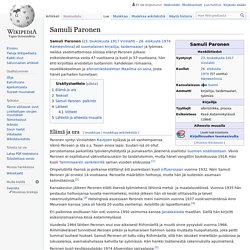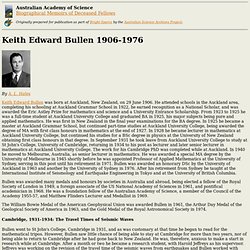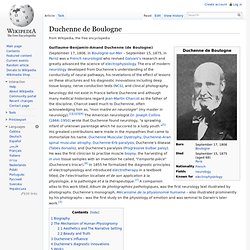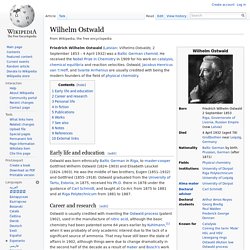

Antti Heikkinen (toimittaja) Pihkatappi.

Helsinki: Siltala, 2013. ISBN 978-952-234-150-1. Matkamies maan. Helsinki: Siltala, 2016. ISBN 978-952-234-382-6. Risainen elämä: Juice Leskinen 1950–2006. Samuli Paronen. Samuli Paronen (23. toukokuuta 1917 Virolahti – 26. elokuuta 1974 Hämeenlinna) oli suomalainen kirjailija, taidemaalari ja työmies.

John Elwes (politician) His maternal grandmother, Lady Isabella Hervey (of the Earls of Bristol), happened to be a celebrated miser.

[clarification needed][8] He received a good education in the classics at Westminster School. After graduating he traveled to Geneva where he embraced his skill for horsemanship and love of the hunt. He was known as one of the best riders in Europe. It was at this time that he was introduced to Voltaire, to whom he was reported to bear a remarkable resemblance. However, Elwes was far more impressed with the quality of the horses at his riding school than by the genius of the French philosopher.
Biographical Memoirs - Keith Edward Bullen 1906-1976. Keith Edward Bullen was born at Auckland, New Zealand, on 29 June 1906.

He attended schools in the Auckland area, completing his schooling at Auckland Grammar School in 1922, he earned recognition as a National Scholar, and was awarded the Eric Astley Prize for mathematics and science and a University Entrance Scholarship. From 1923 to 1925 he was a full-time student at Auckland University College and graduated BA in 1925, his major subjects being pure and applied mathematics.
He was first in New Zealand in the final year examinations for the BA degree. Duchenne de Boulogne. Guillaume-Benjamin-Amand Duchenne (de Boulogne) (September 17, 1806, in Boulogne-sur-Mer – September 15, 1875, in Paris) was a French neurologist who revived Galvani's research and greatly advanced the science of electrophysiology.

The era of modern neurology developed from Duchenne's understanding of the conductivity of neural pathways, his revelations of the effect of lesions on these structures and his diagnostic innovations including deep tissue biopsy, nerve conduction tests (NCS), and clinical photography. Biography[edit] Albumen print archived at the National Library of Medicine in Bethesda. Duchenne's colleagues appended "de Boulogne" to his name to avoid confusion with the like-sounding name of Édouard-Adolphe Duchesne (1804–1869) who was a popular society physician in Paris.[5] Karl Ziegler. Karl Waldemar Ziegler (November 26, 1898 – August 12, 1973) was a German chemist who won the Nobel Prize in Chemistry in 1963, with Giulio Natta, for work on polymers.

The Nobel Committee recognized his "excellent work on organometallic compounds [which]...led to new polymerization reactions and ... paved the way for new and highly useful industrial processes".[1] He is also known for his work involving free-radicals, many-membered rings, and organometallic compounds, as well as the development of Ziegler-Natta catalyst. One of many awards Ziegler received was the Werner von Siemens Ring in 1960 jointly with Otto Bayer and Walter Reppe, for expanding the scientific knowledge of and the technical development of new synthetic materials.[2] William Henry Perkin. Sir William Henry Perkin, FRS (12 March 1838 – 14 July 1907) was an English chemist best known for his accidental discovery, at the age of 18, of the first aniline dye, mauveine.

Isambard Kingdom Brunel. Isambard Kingdom Brunel, FRS (/ˈɪzəmbɑrd bruːˈnɛl/; 9 April 1806 – 15 September 1859), was an English mechanical and civil engineer who built dockyards, the Great Western Railway, a series of steamships including the first propeller-driven transatlantic steamship and numerous important bridges and tunnels.

His designs revolutionised public transport and modern engineering. Though Brunel's projects were not always successful, they often contained innovative solutions to long-standing engineering problems. During his short career, Brunel achieved many engineering "firsts", including assisting in the building of the first tunnel under a navigable river and development of SS Great Britain, the first propeller-driven ocean-going iron ship, which was at the time (1843) also the largest ship ever built.[1][2] Brunel set the standard for a well-built railway, using careful surveys to minimise grades and curves.
Name[edit] Brunel's unique name is an amalgamation of his parents' names. Wilhelm Ostwald. Friedrich Wilhelm Ostwald (Latvian: Vilhelms Ostvalds; 2 September 1853 – 4 April 1932) was a Baltic German chemist.

He received the Nobel Prize in Chemistry in 1909 for his work on catalysis, chemical equilibria and reaction velocities. Ostwald, Jacobus Henricus van 't Hoff, and Svante Arrhenius are usually credited with being the modern founders of the field of physical chemistry. Early life and education[edit] Career and research[edit] Ostwald is usually credited with inventing the Ostwald process (patent 1902), used in the manufacture of nitric acid, although the basic chemistry had been patented some 64 years earlier by Kuhlmann,[1] when it was probably of only academic interest due to the lack of a significant source of ammonia. In 1906 Ostwald was elected a member of the International Committee on Atomic Weights. Juhister.